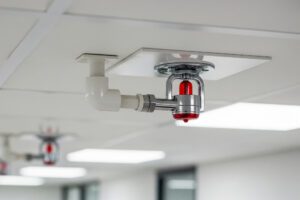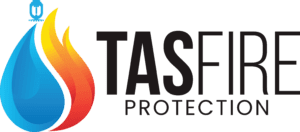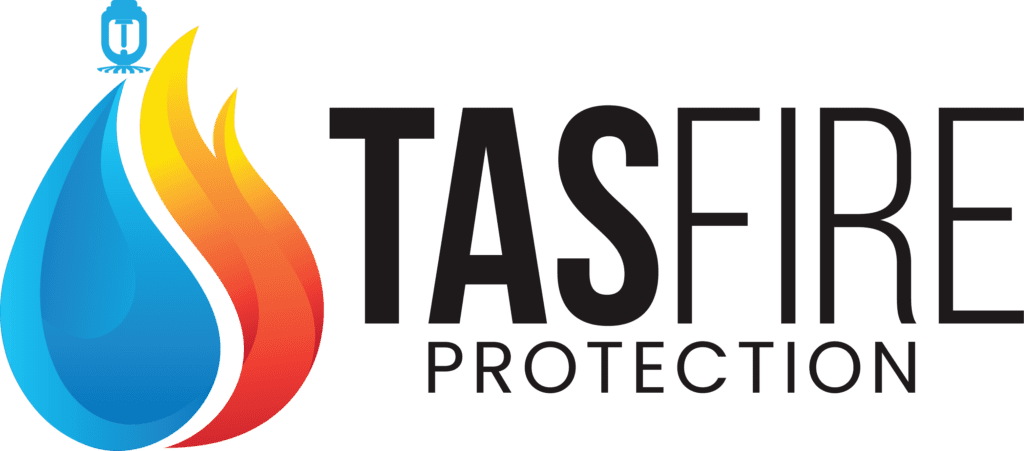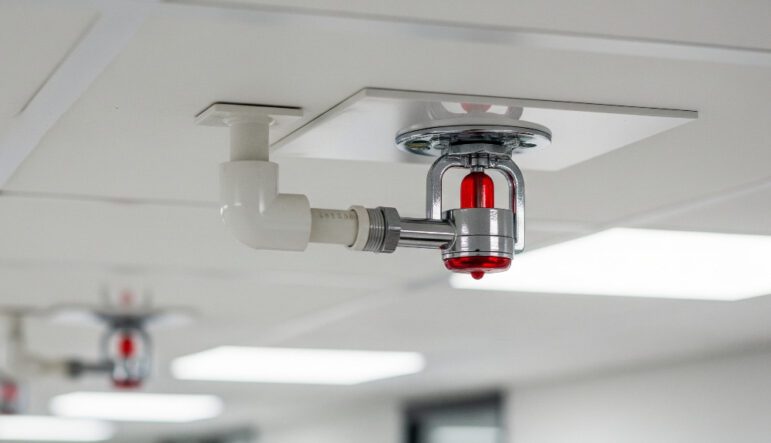Why Fire Sprinkler Systems Fail: A Complete Guide for Property Owners…
 Fire sprinkler systems are your first line of defense against fires, controlling 96% of blazes that trigger them. However, even these reliable systems can fail when you need them most. Understanding why fire sprinkler systems fail and how to prevent these issues is crucial for protecting your property, especially during our harsh winters.
Fire sprinkler systems are your first line of defense against fires, controlling 96% of blazes that trigger them. However, even these reliable systems can fail when you need them most. Understanding why fire sprinkler systems fail and how to prevent these issues is crucial for protecting your property, especially during our harsh winters.
What Causes Fire Sprinkler System Failures?
Research shows that 93% of fire sprinkler failures are caused by human error, while only 7% result from equipment defects. Let’s explore the most common causes and how to address them.
1. Frozen Pipes – A Major Concern
The Problem: Harsh winters pose a significant threat to fire sprinkler systems. When temperatures drop below freezing, water in sprinkler pipes can freeze and expand, causing pipes to burst and rendering your entire system useless.
Signs to Watch For:
- Visible cracks or splits in exposed pipes
- Water stains or puddles around pipe areas
- Complete loss of water pressure in the system
- Ice formation on or around sprinkler pipes
How to Fix and Prevent:
- Maintain proper temperature: Keep all areas with water-filled pipes at minimum 4°C (40°F) as required by NFPA 25
- Insulate vulnerable pipes: Wrap exposed pipes in heated, weather-tight enclosures
- Install dry pipe systems: Consider switching to dry pipe systems in unheated areas
- Regular winterization: Have your system professionally winterized before cold weather hits
- Emergency heating: Use temporary heating during extreme cold snaps
2. Corrosion – The Silent System Killer
The Problem: Corrosion gradually weakens pipes and sprinkler heads, eventually causing leaks, blockages, or complete system failure. This process happens over time due to exposure to oxygen, moisture, and other environmental factors.
Signs to Watch For:
- Rust-colored water coming from the system
- Visible rust or corrosion on pipes and fittings
- Pinhole leaks in pipes
- Reduced water flow or pressure
- Flaking or peeling on pipe surfaces
How to Fix and Prevent:
- Regular inspections: Schedule annual professional inspections to catch corrosion early
- Water quality testing: Test water chemistry to identify corrosive conditions
- Install air vents: Use automatic air vents to reduce oxygen in the system
- Consider nitrogen systems: Fill systems with nitrogen instead of air to reduce corrosion
- Replace corroded components: Don’t delay replacing visibly corroded parts
- Chemical treatment: Use corrosion inhibitors where appropriate
3. Inadequate Water Supply
The Problem: Your sprinkler system is only as good as its water supply. Inadequate water pressure, closed valves, or supply interruptions can render even the best system ineffective.
Signs to Watch For:
- Low water pressure during system tests
- Sprinklers not activating during testing
- Warning lights on control panels
- Visible valve closure indicators
- Municipal water supply notifications
How to Fix and Prevent:
- Check all valves: Ensure main control valves are fully open
- Test water pressure regularly: Conduct monthly pressure tests
- Backup water supply: Consider installing water storage tanks for critical areas
- Coordinate with utilities: Stay informed about municipal water work that might affect supply
- Professional testing: Have annual flow tests performed by certified technicians
4. Damaged Sprinkler Heads
The Problem: Sprinkler heads can be damaged by physical impact, corrosion, paint overspray, or normal wear and tear. Damaged heads may not activate properly or may leak continuously.
Signs to Watch For:
- Visible dents, cracks, or damage to sprinkler heads
- Paint or debris covering the sprinkler head
- Continuous dripping or leaking
- Sprinkler heads that don’t activate during testing
- Corrosion on the sprinkler assembly
How to Fix and Prevent:
- Install protective guards: Use sprinkler head guards in high-traffic areas
- Regular visual inspections: Check heads monthly for visible damage
- Proper replacement: Always use identical replacement heads with the same specifications
- Avoid painting: Never paint over sprinkler heads
- Professional installation: Have damaged heads replaced by certified technicians
5. Lack of Maintenance
The Problem: Neglected maintenance is one of the leading causes of sprinkler system failure. Without regular inspections and upkeep, small problems become major failures.
Signs to Watch For:
- No recent inspection records
- Visible dust or debris on system components
- Outdated or missing maintenance tags
- System alarms or warning indicators
- General deterioration of system appearance
How to Fix and Prevent:
- Follow NFPA 25 guidelines: Adhere to professional maintenance schedules
- Monthly inspections: Conduct basic visual inspections monthly
- Annual professional service: Have certified technicians perform comprehensive annual inspections
- Keep detailed records: Maintain logs of all inspections, tests, and repairs
- Address issues promptly: Don’t delay repairs when problems are identified
6. Fire Sprinkler Pipe Burst
The Problem: Pipe bursts are among the most serious sprinkler system failures, often caused by freezing, corrosion, or physical damage. They can cause extensive water damage and leave your property unprotected.
Signs to Watch For:
- Sudden loss of system pressure
- Large amounts of water where it shouldn’t be
- Visible pipe cracks or ruptures
- Water damage to surrounding areas
- System failure alarms
How to Fix and Prevent:
- Immediate shutdown: Turn off the water supply immediately when a burst occurs
- Emergency repairs: Call professional technicians for immediate pipe replacement
- Proper insulation: Ensure all pipes are adequately insulated against freezing
- Regular pressure testing: Conduct annual hydrostatic tests to identify weak pipes
- Quality materials: Use appropriate pipe materials for your specific environment
7. Faulty Control Valves
The Problem: Control valves regulate water flow throughout your sprinkler system. When they malfunction, entire sections of your system may not receive adequate water pressure.
Signs to Watch For:
- Difficulty opening or closing valves
- Visible corrosion or damage on valve components
- Inconsistent water pressure in different zones
- Valves that won’t stay in position
- Leaking around valve stems or connections
How to Fix and Prevent:
- Regular valve operation: Exercise valves quarterly to prevent sticking
- Visual inspections: Check valves monthly for signs of damage or corrosion
- Professional maintenance: Have valves serviced annually by qualified technicians
- Proper labeling: Ensure all valves are clearly labeled and accessible
- Replace when necessary: Don’t attempt to repair severely damaged valves
8. Electrical Malfunctions in Control Panels
The Problem: Modern sprinkler systems rely on electronic control panels to monitor system status and trigger alarms. Electrical problems can prevent proper system operation and monitoring.
Signs to Watch For:
- Warning lights or error codes on the control panel
- System not responding during tests
- False alarms or failure to alarm during actual events
- Display screens that are blank or showing errors
- Unusual sounds from electrical components
How to Fix and Prevent:
- Regular power checks: Ensure consistent power supply to control panels
- Battery backup testing: Test backup batteries quarterly
- Professional electrical service: Have licensed electricians inspect electrical components annually
- Keep panels clean: Regular cleaning prevents dust buildup that can cause malfunctions
- Update as needed: Replace outdated control systems with modern, reliable units
9. Manual Errors
The Problem: Human error accounts for the vast majority of sprinkler system failures. This includes shutting off systems inappropriately, physical interference, or poor maintenance practices.
Signs to Watch For:
- System shut-off tags or notices
- Objects stored too close to sprinkler heads
- Decorations hanging from sprinkler pipes
- Unauthorized modifications to the system
- Inadequate clearance around sprinkler components
How to Fix and Prevent:
- Staff training: Train building personnel on proper fire safety procedures
- Clear procedures: Establish written protocols for system maintenance and emergency procedures
- Regular education: Conduct annual fire safety training for all building occupants
- Proper storage: Maintain adequate clearance around all sprinkler components
- Professional oversight: Have all system modifications performed by certified professionals
10. Failing Water Supply Infrastructure
The Problem: External water supply issues, including municipal supply problems, faulty pumps, or damaged supply lines, can compromise your sprinkler system’s effectiveness.
Signs to Watch For:
- Inconsistent water pressure from municipal sources
- Fire pump alarms or warning indicators
- Visible damage to supply lines or connections
- Water quality issues affecting system performance
- Municipal notices about water supply interruptions
How to Fix and Prevent:
- Regular pump testing: Test fire pumps monthly and service annually
- Backup systems: Consider installing backup water storage or pumping systems
- Supply line maintenance: Inspect and maintain all water supply lines regularly
- Communication with utilities: Stay informed about municipal water system maintenance
- Professional monitoring: Use monitoring systems to alert you to supply issues immediately
Protecting Your Investment
Fire sprinkler system failures can have devastating consequences, but most are entirely preventable with proper maintenance, regular inspections, and prompt attention to problems. In challenging climate, paying extra attention to freeze protection and corrosion prevention is essential.
Take Action Today:
- Schedule a professional inspection of your fire sprinkler system
- Ensure your system is properly winterized before cold weather arrives
- Establish a regular maintenance schedule with certified fire protection professionals
- Train your staff on proper fire safety procedures and system operations
Don’t wait until it’s too late – your fire sprinkler system is only effective if it’s properly maintained and ready to work when you need it most.
Frequently Asked Questions
What will trigger fire sprinklers?
Fire sprinklers are triggered by heat, not smoke. Each sprinkler head contains a heat-sensitive element (usually a glass bulb or fusible link) that activates when temperatures reach 135-286°F (57-141°C), depending on the specific head rating. Only sprinkler heads directly exposed to sufficient heat will activate – they don’t all go off at once like in movies.
How often do fire sprinkler systems fail?
According to NFPA data, fire sprinkler systems fail or operate ineffectively about 7% of the time. However, when properly maintained and installed, sprinklers are effective in controlling fires 92-96% of the time. The vast majority of failures (93%) are due to human error rather than equipment defects.
What is the life expectancy of a fire sprinkler system?
A properly maintained fire sprinkler system can last 50-100 years, though individual components may need replacement sooner. Sprinkler heads typically last 25-50 years, while pipes may last the lifetime of the building if properly maintained. Regular maintenance and timely replacement of worn components are key to maximizing system life.
How to find a leak in a fire sprinkler system?
To locate leaks in your fire sprinkler system:
-
- Visual inspection: Look for water stains, puddles, or visible drips around pipes and fittings
- Pressure testing: Monitor system pressure – consistent pressure loss indicates a leak
- Listen for sounds: Hissing or dripping sounds can help locate hidden leaks
- Check common problem areas: Joints, fittings, sprinkler heads, and areas exposed to temperature changes
- Professional leak detection: Use electronic leak detection equipment for hidden leaks in walls or underground pipes
For any suspected leaks, contact a certified fire protection professional immediately to prevent system failure and water damage.
We Provide Fire Sprinkler System Installation Services
At TAS Fire Protection, we undertake sprinkler system installation and certify that they are in the highest working order. With a wealth of experience in the industry, we have the team and prowess to render a fire sprinkler system which meets your fire protection requirements. A sprinkler system is one of the most safer and effective ways to extinguish a fire. They aid to monitor, find and minimize fire risks. The National Fire Protection Association statistics show that the havoc caused to commercial and institutional buildings with a sprinkler system was about 60% lesser than the havoc to buildings without a sprinkler system.
> Learn More
Contact Us (905-870-7779) for a Free Consultation!
—

About TAS Fire Protection
TAS Fire Protection offers comprehensive and cutting-edge fire protection and security services to commercial, industrial, and high-rise properties. Our team of highly skilled professionals has years of experience in installing, maintaining, and inspecting fire alarm systems, fire sprinkler systems, fire extinguishers, fire hydrants, security alarm systems, and more. We understand that fire safety and security is essential to the protection of lives and property.
> Learn More

